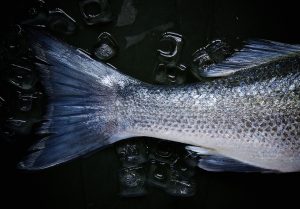Tips for Using Gel Packs in Shipping Seafood

Gel packs are sealable polythene bags usually filled with a cooling gel. Ideally, the pack contains water and a chemical that converts the contents in the bag into a gel by increasing the viscosity.
If you have ever handled fresh foods, you can agree that temperature plays an important role. When the temperatures are high, fresh foods quickly spoil. Unfortunately, this is the case with seafood. But with the availability of gel packs and dry ice today, your sea catch can’t go to waste. This article gives three tips for using gel packs in the transportation of seafood.
What Are Gel Packs?
Gel packs are sealable polythene bags usually filled with a cooling gel. Ideally, the pack contains water and a chemical that converts the contents in the bag into a gel by increasing the viscosity. Typically, they’re made for cold-chain applications. However, if handled with care, gel packs can last longer.
Choose The Right Coolant
Indeed, there are a few coolant options. You can choose dry ice, ice packs, or gel packs. Nonetheless, each refrigerant has its advantages and limitations. Gel packs are a terrific alternative to regular cube ice since they keep fresh seafood fresh without causing a mess by melting into water. They’re also a less expensive solution to keep your product cool while it’s being shipped.
Occasionally, a combination of dry ice and gel packs may be used. The gel packs stabilize the dry ice, forcing it to sublimate slower and extending the coolant and product’s shelf lives. This method is suitable for long-distance shipment and works for seafood products that can be frozen and then thawed before being delivered.
Use Well-Insulated Containers
A decent quality insulated container is essential for long-term freezing and refrigeration during transportation. The insulated Styrofoam container, which comes in many sizes and wall thicknesses and works well with dry ice and gel packs, is the traditional container for shipping perishables. To decrease the amount of coolant lost when shipping live or frozen fish, you’ll most likely need a container that will keep the interior as cool as possible. Checking the R-factor, which relates to how much the material resists heat change, is the best technique to analyze the container’s insulating capabilities. The better the insulation, the greater the R-factor.
Pack Enough Coolant For The Product
Coolants lose their efficiency over time. For instance, gel packs revert to a semi-liquid state inside the bag.
To keep your seafood goods from spoiling in transit, make sure you pack enough coolant in with them to keep the temperature stable and reduce coolant loss. The amount of coolant is determined by the amount of product being shipped, the container used, and the projected transit time.
For example, you’ll need 5 to 10 pounds of dry ice for a 15-quart container over 24 hours. It is recommended that you use one pound of gel packs every 24 hours for each cubic foot.
Dry Ice For All Your Needs
Dry Ice Corp is the largest regional supplier of dry ice and related products in the Northeastern United States. Our ice is fresh and delivered right to your doorstep. We are happy to help you determine the best way to ship your goods, whether you have a huge amount of cookies or a single pie, and help you select the perfect amount of ice for the job. Give us a call at (201) 767-3200 or contact us online for a quote. To connect with us online, be sure to follow us on Facebook, Pinterest, and Twitter.



